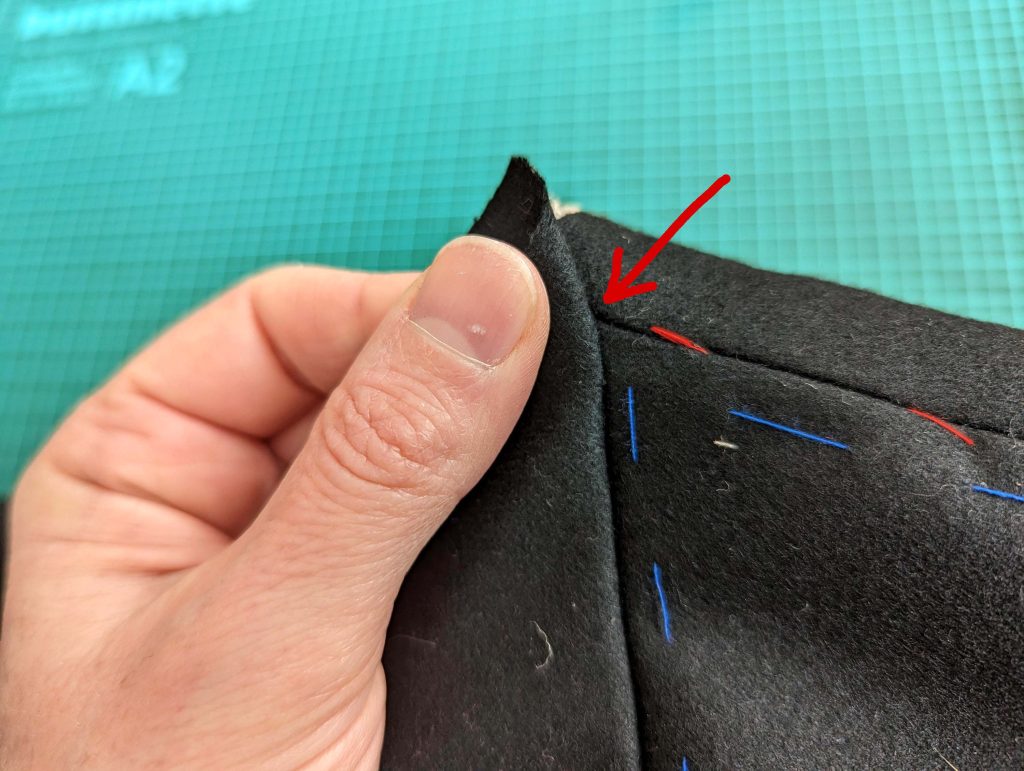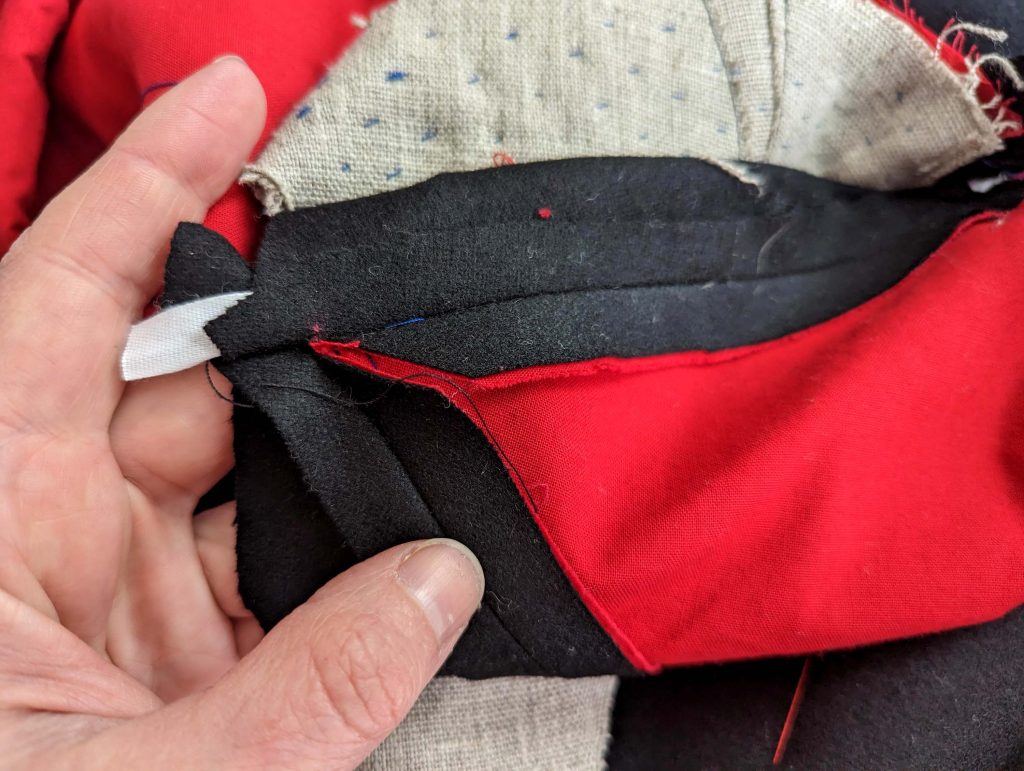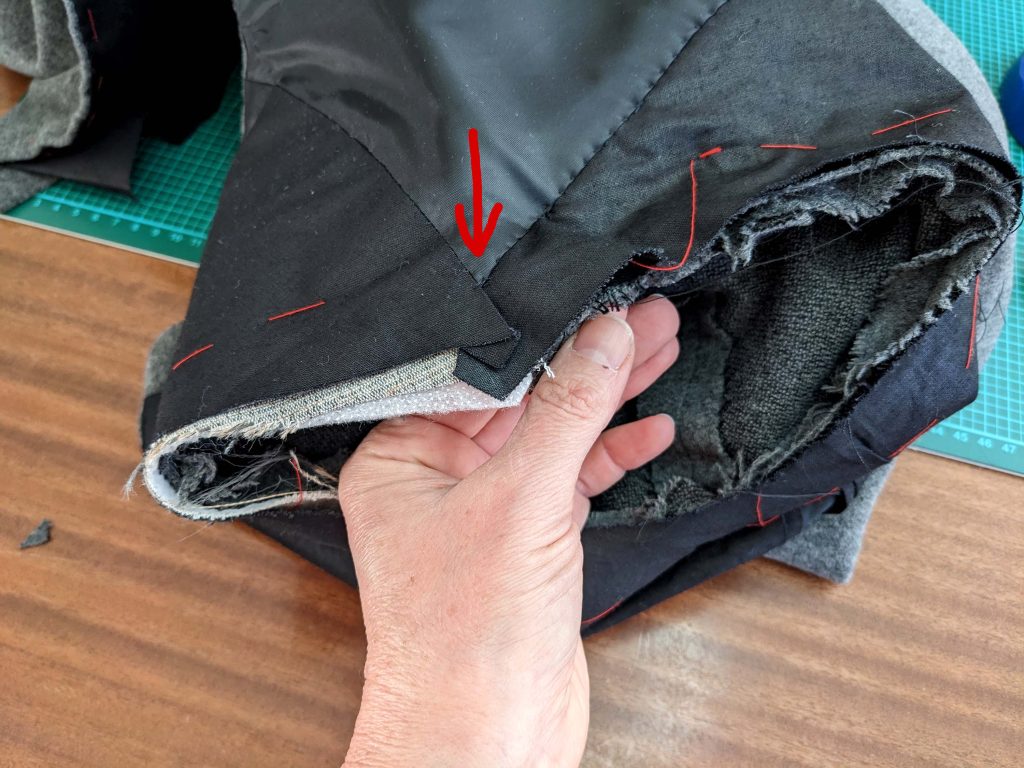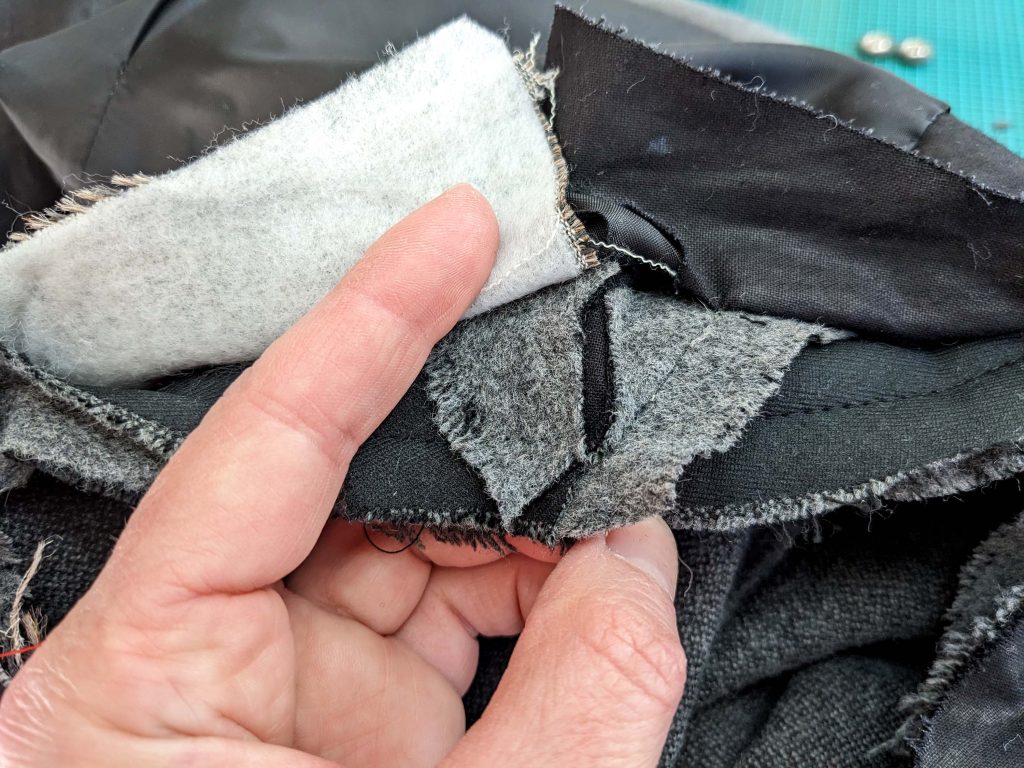Teil 1 – Allgemeine Überlegungen und Punkt (1) – (2)
(10) Den Ärmel entsprechend der Markierungen rechts auf rechts in das Armloch einsetzen. Den Ärmel erst heften, den Sitz kontrollieren und dann erst nähen. Dabei wird sowohl am Oberteil, als auch am Ärmel nur der Oberstoff vernäht, Futter und Einlage werden zur Seite gefaltet. An Punkt (3) muss genau gearbeitet werden, die Nahtzugaben werden hier nicht mitgenäht.




Am Armloch Einlage und Futter wieder zurücklegen und glattstreichen, knapp neben der Nahtlinie alle Lagen zusammenheften und die Nahtzugaben am Armloch auf 1cm zurückschneiden.




Für die Ärmelfische je ein bis zwei Schichten Volumenvlies (je nach gewünschter Polsterung) und eine Schicht Haareinlage aufeinander legen. In die Armkugel entsprechend der Markierung legen, die schmale Kante zeigt nach vorne, das Vlies zum Ärmel. An die Nahtzugaben von Armloch und Ärmel nähen. Das Futter durch das Armloch heraufziehen, die Nahtzugabe einschlagen und entlang der Ärmelnaht ausrichten. Damit werden die unversäuberten Nahtzugaben des Armloches abgedeckt. Anstaffieren, die Mehrweite an der Armkugel in kleine Falten legen und anstaffieren.

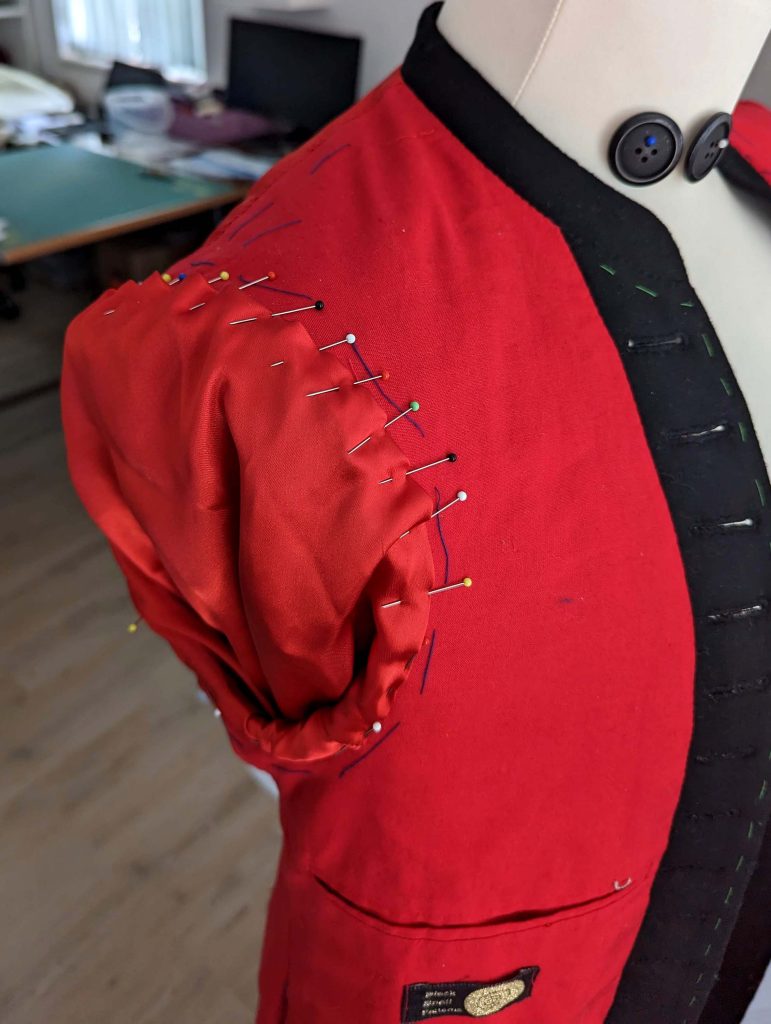
(11) Beziehbare Knöpfe oder Holzscheiben mit Stoff beziehen, und an der linken Vorderkante passende Knopflöcher nähen, dabei die gebogene Vorderkante mit dem unteren, geraden Abschnitt an einer Geraden anlegen und die Knopflöcher parallel zur gedachten Verlängerung dieser Geraden anzeichnen. Rund um die Knopflöcher alle Schichten zusammenheften, damit beim Nähen nichts verrutschen kann.

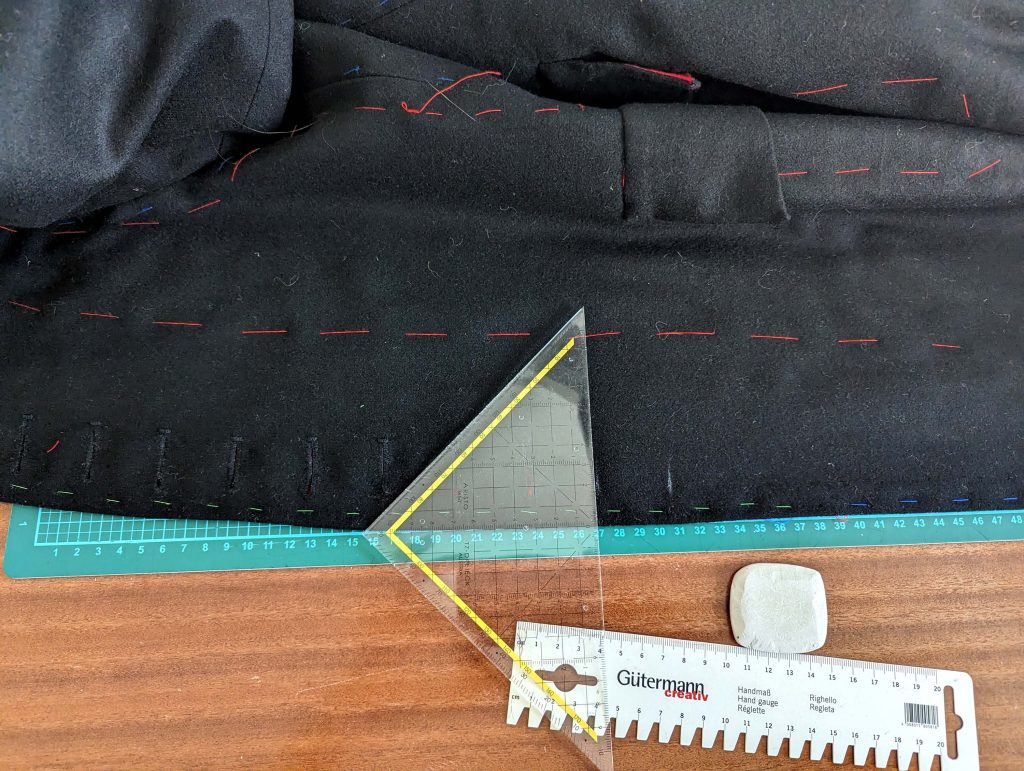

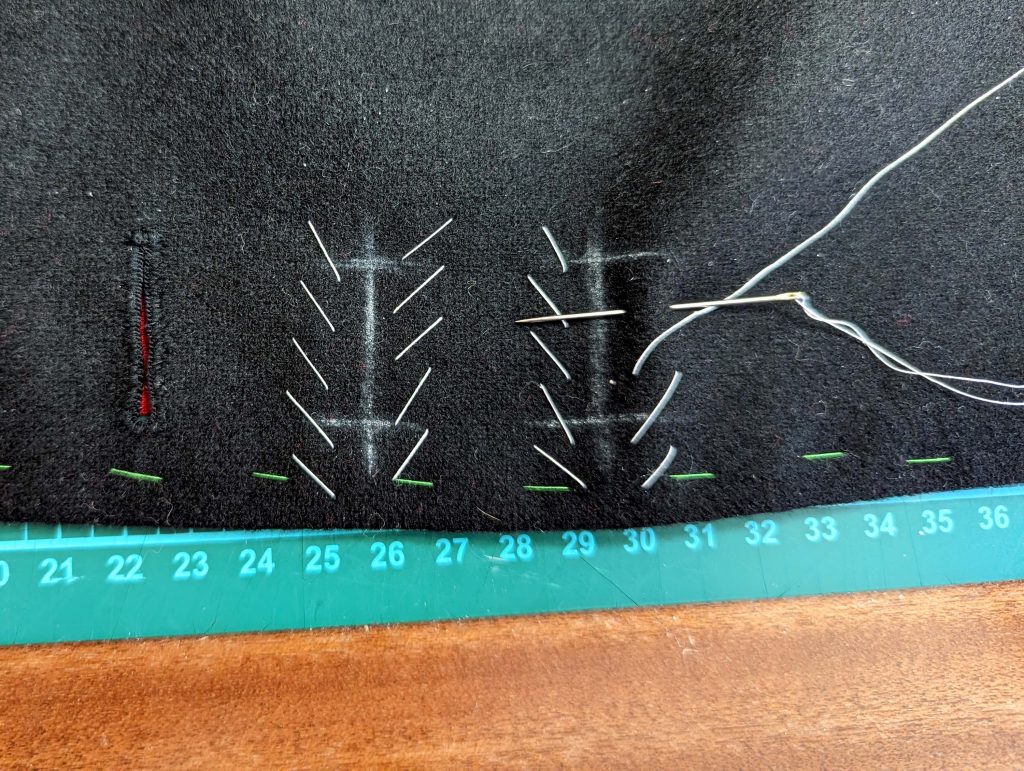
Für Augenknopflöcher erst ein Loch stanzen und dann das Knopfloch aufschneiden, die Kanten mit dünnem Faden umstechen. Das Knopfloch mit Knopflochstich umstechen, ich verwende gerne einen dünnen Faden doppelt anstatt eines Knopflochfadens.






Die Knöpfe an die rechte Kante nähen, in Höhe der Spange bekommt der Knopf auf der Innenseite einen kleinen Gegenknopf. Die Knöpfe dienen nur zur Zierde, daher können die Knopflöcher, müssen aber nicht aufgeschnitten werden.


Die Knöpfe am Ärmel dienen ebenfalls nur zur Zierde und werden, wenn keine Knopflöcher genäht wurden, durch alle Schichten angenäht. Der Aufschlag von Ärmel A wird durch die Knöpfe in der richtigen Position festgehalten. Am oberen Ende der Falte im Rücken je einen Knopf anbringen.


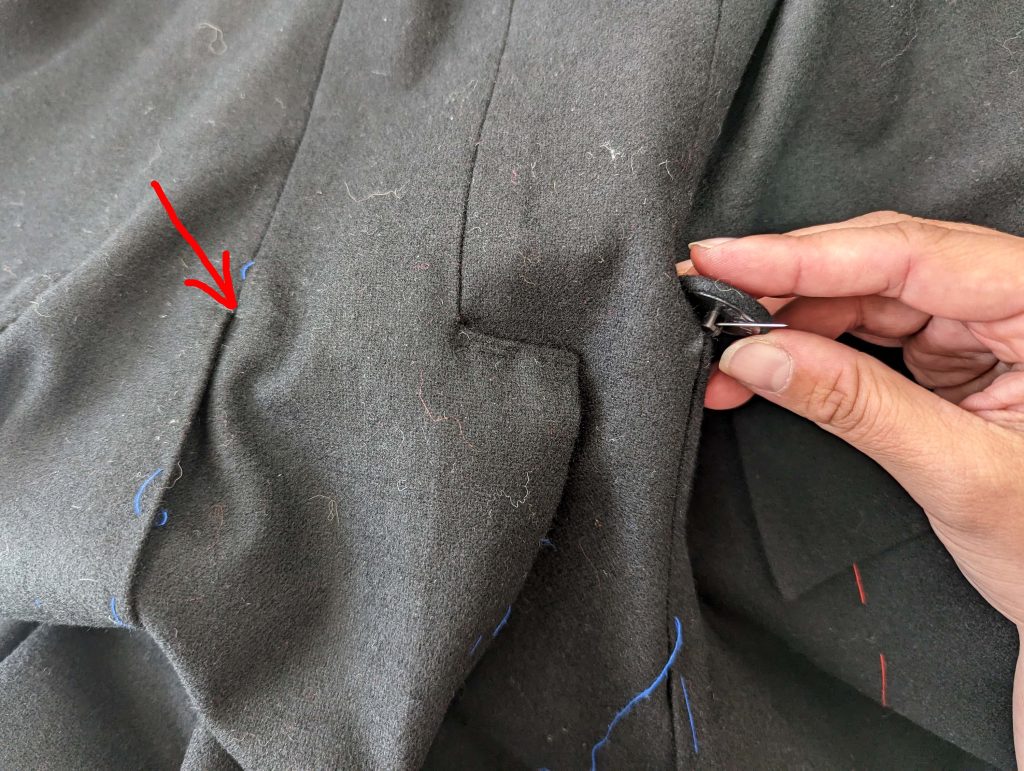
(12) Hier etwas anders als in der Anleitung, kein Futter in dem Sinne, sondern das Futter besteht auch aus Oberstoff und wird angeschnitten.
Die Spange mit Einlage verstärken und diese einheften, die Nahtzugaben einschlagen, auf eine gleichmäßige Breite achten und an den Ecken V-förmig einschneiden. Bügeln und die Nahtzugaben an die Einlage hexen. Am Futterteil die Nahtzugaben zurückschneiden, links auf links auf die Spange falten und anstaffieren. Am rechten Ende ein kleines Knopfloch anbringen, das linke Ende wird innen angenäht.


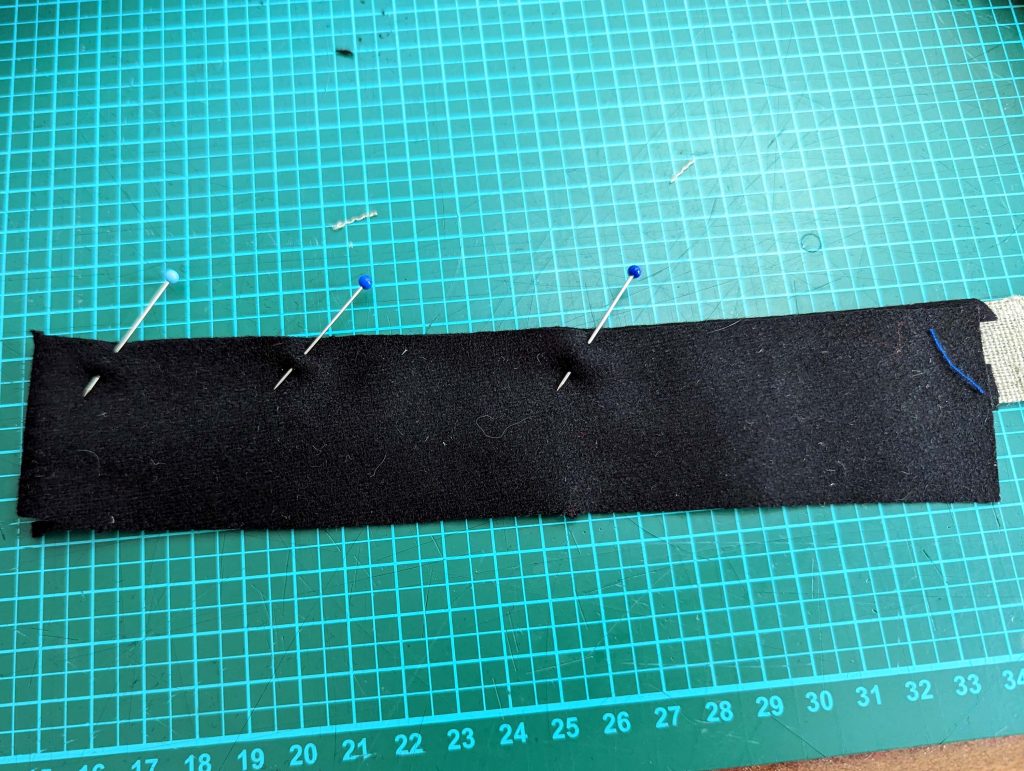





Und hier das fertige Kleidungsstück:












